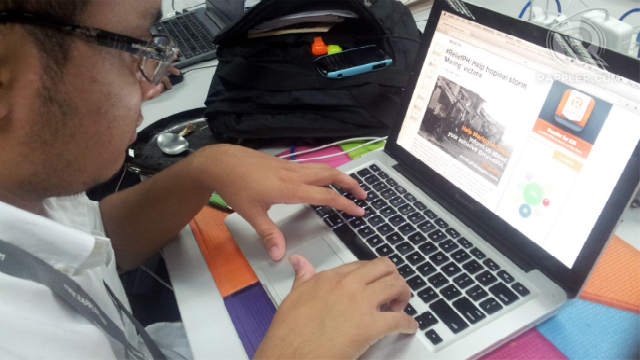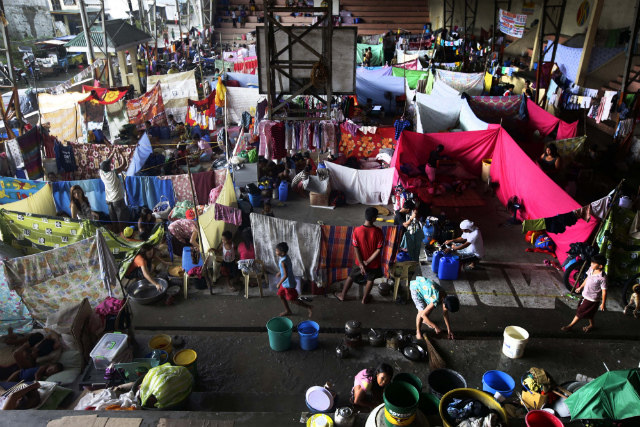SUMMARY
This is AI generated summarization, which may have errors. For context, always refer to the full article.

MANILA, Philippines – There is no doubt that the Internet is a powerful channel of distributing information, a platform where the concern of one through a single click of the mouse can become the concern of many.
Abandoning the pursuit to address collective needs on account of your own comfort and convenience becomes difficult to bear when the struggles of others are reflected on the screen of your laptop or mobile phone.
READ: Online civic engagement: Is it for real?
In times of disaster, it becomes even more imperative to harness this tool to expedite the delivery of aid and relief.
Unprecedented monsoon rains on Monday, August 19, enhanced by tropical storm Maring (international codename Trami) left at least 17 dead and more than one million people affected. Several areas of Luzon were placed under a state of calamity.

Impromptu relief responders
Throughout the week-long ordeal, the Internet was a space where social media users became impromptu relief responders connecting each other based on needs and resources.
Netizens utilized social media to share about the conditions in their area, to beseech for assistance for their friends living in high-risk areas, and to call for donations for organized relief operations.
With an online crowd hungry for opportunities to help out, MovePH took the initiative to gather baseline data on who or which organization is doing what, in what place, at what time, and with what resources.
@MovePH Thanks for the info kanina. 🙂 I was able to help today! God bless Philippines. <3
— Strawberry Shortcake (@Schultz121992) August 21, 2013
Filtering out noise
To be sure, not all the information shared was useful. Filtering out the noise from what was authentic was the challenge.
Indicating hashtags for specific uses – #RescuePH for calls for help, #ReliefPH for opportunities to donate/volunteer, and #MovePH to create linkages between individuals wanting to donate/volunteer and groups in need of them – certainly helped.
Doing the filtering online hopefully lessened the likelihood of people acting out based on misinformation.
In Las Piñas City, an Italian restaurant started a small relief effort and called out for donations through its social media accounts as well as through Rappler MovePH’s list of relief operations and donation centers.
Hi friends! Mama Lou’s is now accepting relief goods and donations. @SouthSnippets @MovePH #ReliefPH http://t.co/1jw7p5HF17
Supplies started coming in a few hours after the call-out, including 50 kilograms of rice. The restaurant owners decided to cook hot porridge for distribution the day after.
Again, social media was their source on which evacuation center to go to (see Rappler’s map of evacuation centers below).
Networks emerged
Mama Lou’s was just one of the many small-scale relief efforts that have emerged from the online initiative of linking up Internet users.
Thank you for your donations and giving us the opportunity to help 🙂 #movePH @MovePH #reliefPH pic.twitter.com/y3EVp63bH7
— Mama Lou’s (@mama_lous) August 21, 2013
Networks developed online, even between individuals and organizations with no standing relationships previously.
@MovePH big help! Thank you very much 🙂
Online civic engagement
Not only has the Internet democratized the publication industry where any user is now a producer of content, it has pretty much transformed all other initiatives for anybody’s taking given the vast amount of information it offers.
Online efforts of aggregating data for the benefit of Filipino netizens is helping speed up the delivery of assistance and relief to where they are needed.
With the right information traveling to the right people, initiatives in the virtual world have started – and will hopefully continue – to translate to real-world action. – Rappler.com
Buena Bernal writes development stories and manages projects for Rappler’s MovePH.
Add a comment
How does this make you feel?
There are no comments yet. Add your comment to start the conversation.